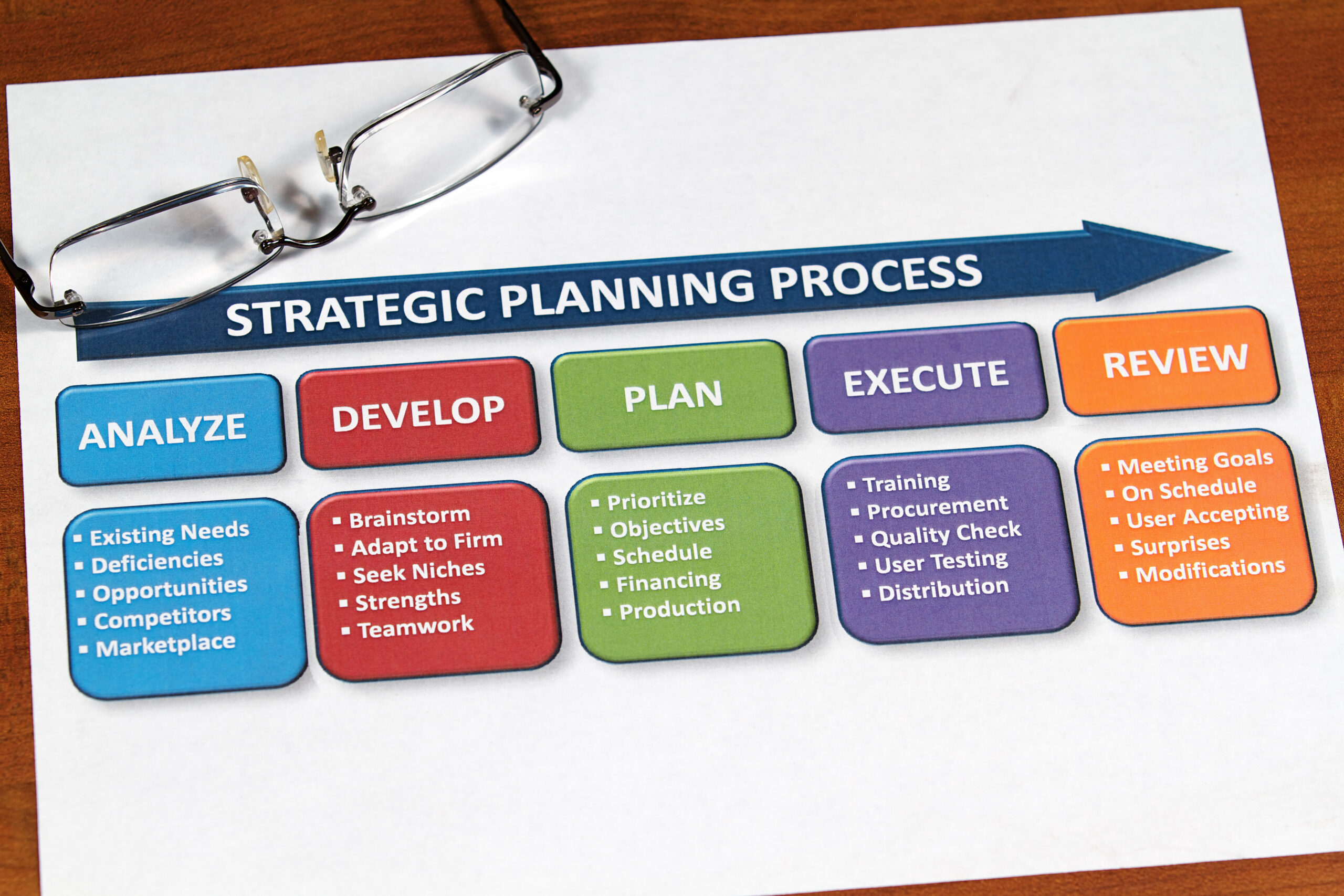Gregor Pfeiffer
Minimize risks, increase margins

Strategic Redesign & Adaptation of Business Model
The rapid and negative change of the general conditions makes it necessary for many developers to focus on certain steps of the value chain.
I am happy to support you in the following fields:
- Definition of the future strategic focus (e.g. rezoning, land identification, construction, single sale, operation of the property etc.)
- Implementation of the jointly developed strategy (process definition, coaching, partner search).
Backgroundstories:
In order to reduce the dependency on construction companies, a medium-sized real estate developer decided to establish a construction company himself. For the first 1.5 years, I took on the role of interim commercial director.
Among the most important issues in the start-up phase were:
- the conclusion of strategic partnerships with major subcontractors
- the implementation of an operative project controlling, which allowed a weekly comparison of schedule, working hours, material quantities and costs
- the introduction of liquidity planning appropriate to the business purpose in order to avoid cash shortages. Due to the large number of typical construction-related liquidity burdens (guarantees, cover reserves, inspection and payment deadlines), this point plays a very important role
- searching for staff
The construction company was able to report a positive result already in the first year, also no liquidity injections from the parent company were necessary. The goal of reducing dependence on a general contractor was achieved. However, it became apparent that dependency had been shifted, since a construction company acting as a general contractor is in turn naturally dependent on subcontractors. Optimizing the construction company's vertical integration plays a key role in this strategy.
A medium-sized real estate developer was looking for operators for its residential properties in the upscale segment. The aim was to offer tenants a service that went beyond the usual property management package and to be able to present fixed rental income to investors and banks.
An operating company was founded, which rented the apartments at a basic rental price and then offered them to the end consumers at a higher price with the addition of various services and, if required, for a shorter period of time
Among the biggest challenges were the definition of the services and the search for personnel and partners with whom this offer could be provided.
The goals in terms of presentation were basically achieved, although in practice investors already know exactly how to distinguish between a pure residential product and serviced apartments as a hybrid of residential and hotel operations.
Plot and Real Estate Project Acquisition
The old businessman's rule that "in purchasing lies profit" rarely seems to be more true than currently in the real estate industry. A good purchase of land or projects not only minimizes risks, but also creates the basis for outstanding projects.
I am happy to support you in the following fields:
- Examination of offers (inspection of exposées/first calculation/pre-selection) Deal structuring & negotiation support/leadership Implementation of a multi-stage property purchasing process
- Dealstrukturierung & Verhandlungsbegleitung bzw. -führung
- Implementierung eines mehrstufigen Grundstückseinkauf
Backgroundstories:
A mid-sized developer had a JV with a large real estate fund. The developer's task was to regularly procure plots of land and then develop them together with the fund, with the fund primarily playing the role of equity financier and the developer that of working partner. The equity required was contributed as interest-bearing mezzanine.
The acquisition managers of the developer continuously brought numerous proposals for projects, whereby it became apparent after only one year that the financing costs of the projects in particular had been significantly underestimated. The background to this is that we humans have a very hard time estimating compound interest.
I solved the problem by creating a tool that actually calculated the financing costs based on the (interest) rates to be entered and the distribution of liquidity. In addition, some rates were fixed in a binding way and could only be changed with the approval of the management. Some projects were not submitted after that, and the financing costs were very close to reality. The fund asked a little later if it could buy the tool.
A mid-sized real estate developer wanted to grow and was not receiving any viable land offers from brokers. To avoid interrupting the deal flow, a multi-step land purchasing process was implemented:
Team 1 searched for land according to defined specifications and researched the owner. Team 2 made phone calls and sold the owner an appointment. Team 3 conducted the acquisition interviews.
The process is definitely tedious, the funnel wide. At the same time, unlike the broker offers, we did identify some properties that could be done business with.
In the specific case, unfortunately, some of the team members left the company and the project was also shut down due to lack of success in filling the staff. In sum, it can be said that finding suitable employees for this activity is the most difficult part of implementing this strategy.


Project Exit
Due to cheap money, it has been relatively easy to sell apartments in recent years. Especially private buyers of apartments were willing to pay very high prices, so that the ancillary costs and support expenses took a back seat. However, due to the increasing market saturation, thinking in alternatives is the order of the day, especially for larger properties.
I am happy to support you in the following fields:
- Target group analysis
- Product definition/deal structuring
- Sales partner selection and management
- Exit preparation (on project and company level)
- Negotiation support/leadership
Backgroundstories:
A medium-sized developer had acquired a property which was to be developed in a neighboring country in the southeast, but the originally envisaged (Austrian) equity and exit partner got lost. Together with a legally trained colleague I was given the task to look for an alternative partner and to draw up a contract. After several discussions, we decided on an opportunistic English fund as a partner. In the course of the negotiations, the following main parameters had to be negotiated:
- Waterfall of repayments
- Mezzanine interest rate for capital contributions in project phase
- Fees for services provided by the developer
- Handling of disagreements (shootout clauses, etc.)
The atmosphere in the discussions was good, the points were negotiated quickly and professionally. Things got exciting at an unexpected point. Unfortunately, we found that the fund's compliance regulations did not always match local practices and necessities. In the end, however, a solution was found for this problem as well.
A medium-sized project developer wanted to sell a project under development as a forward deal.
I took on the role of coordinator of the sale. The project proceeded in the following phases:
- Doing a market sounding
- Defining the project schedule
- Definition of the product (investment property, yield, rental guarantee, dealing with vacancies, etc.)
- Selection of marketing and sales partners and negotiation of contracts
- Preparation of investor information on project and company level (incl. statements on sustainability)
- Follow-up of the marketing campaign
- Representing the company to investors
In my experience, the most critical points in the course of such a project are the definition of the product, the negotiations with the distribution partners and the preparation of the investor information, especially with regard to sustainability issues. When defining the product, it makes sense to be flexible in the course of negotiations, but a realistic basic offer is expected. With regard to sales partners, it is important that they themselves believe in the product, and sustainability is becoming a must criterion for more and more funds.
Commercial Management of Construction- and Real Estate Projects
Construction and real estate industries are often highly technology-driven, but the positive effect of a clean commercial execution should not be underestimated, both in terms of margin and risk management.
My services include:
- Implementation of project controlling
- Implementation of integrated business reporting
- Determination of cost and service accruals in cooperation with construction site
- Coordination of project evaluation
- Optimization of commercial processes (O2C, P2P, planning/reporting)
- Management of digitization projects in the commercial/administrative area.
Backgroundstories:
A newly founded construction company needed a controlling tool to manage its construction sites. Together with the construction site managers, we defined the activity and cost unit level as well as key figures that we would evaluate and discuss on a weekly basis.
With regard to the activity level, we oriented ourselves to the service description for building construction; with regard to the cost units, we agreed to evaluate larger construction sites separately according to building structure.
We defined the following key figures:
- Project schedule: planned/actual comparison
- Consumption of the most important materials (concrete, steel, etc.): quantitative planned/actual comparison
- Hourly effort: quantitative plan/actual comparison
- Personnel efficiency, defined as actual hours / target hours for the work actually performed.
In addition, we went through the planned quantities of the most important materials for the trades/cost units already tackled on a weekly basis and adapted the budget if necessary.
At irregular intervals, we supplemented the controlling with further analyses such as the real average costs for core materials such as concrete.
Weekly controlling at this level of detail made it possible to identify deviations at an early stage and quickly initiate countermeasures. In particular, the key figure of personnel efficiency was communicated very aggressively on the construction site in order to keep the team motivated.
A large Austrian construction group had an organizational or management structure that deviated from the corporate structure. The previous reporting could provide the results of the individual divisions, but not the capital commitment. A pure profit analysis can lead to distorted results, as the following example shows:
- Division 1 generates only small profits of 1% of operating revenue, but is cash rich all the time. Its return on equity is mathematically infinite. The division should therefore be expanded for yield considerations.
- Division 2 achieves a 2% margin, but ties up a lot of capital. Depending on the group's cost of equity, it may be advisable to discontinue the division.
In the course of the project I led, a logic of capital allocation on cost center level as well as a management consolidation logic were designed. The necessary system-side changes were implemented together with colleagues from IT.
A leading real estate developer needed a controlling tool to manage its projects. Together with controlling and some project managers I defined the activity and cost unit level on which we would evaluate and discuss on a monthly basis.
We coordinated the activities with the cost elements in the ERP system so that the import of the actual values worked without major effort. As cost objects, we decided to create up to 5 dummy suppliers per activity and project.
The controlling itself followed the procurement process and included the columns budget, order, invoice receipt and cash issue, each for the combination project/cost element/supplier. It was therefore possible, for example, to see how much had been budgeted, awarded, invoiced and paid for painting work at the painter "Meier & Sohn" on project XY on the respective key date.
In a second step, the controlling was extended by column called claims.
Controlling at this level of detail enabled deviations to be identified early on and countermeasures to be initiated quickly.
A medium-sized developer had expanded rapidly abroad in the previous months, so that not enough attention was paid to administrative processes. As a consequence, some cost items from vehicle fleet to accommodation and hospitality expenses to money exchange increased significantly.
I first analyzed the relevant cost items as well as the causative processes and reorganized them. In the end, the developer's total costs (excluding construction costs) were reduced by around 3%. Admittedly, the leverage is not huge, but sometimes the fruits do not hang very high. The turnaround time for the project was around 3 months, and the annual savings were in the hundreds of thousands.
The key in this type of optimization is to find the right balance between personnel-related process costs and third-party costs. I learned years later how to overdo it in the other direction when another developer always got 5 quotes for de facto every administrative order and had all costs pre-approved by several people. The third-party costs were really sensationally low, the personnel process costs unfortunately not.
A newly founded construction company was faced with the challenge of introducing a purchasing process that was optimized for results and as low in corruption as possible. As the process owner, I designed the following processes in coordination with construction site managers and the owner:
- Purchasing process for services
The starting point is the announcement of the need by the construction engineering department, which prepares an anonymous invitation to tender. The purchasing department, which reports to the CFO, sends the tender documents including general terms and conditions, defined payment terms, etc. to potential providers. The management reserves the right to forward the documents to other providers without communicating them to the specialist departments.
The coordination of the response to queries is carried out by the purchasing department, whereby all responses are communicated back to all providers.
Bids must be submitted by mail in a sealed envelope by a specified deadline. All documents will be opened collectively in the presence of the legal department. The 3-5 best bidders will be invited for talks. After the 1st round of talks, the two best bidders are invited to negotiations in parallel, the award is fixed after the 2nd round of talks (exception: new tender).
- Purchasing process for (small) materials
The goal is to largely process through framework agreements to be negotiated annually, the process for concluding framework agreements corresponds to the award process for services.
For materials not purchased through master contracts, the following applies.
The construction engineering department announces requirements in weekly meetings with the purchasing department. The purchasing department, which reports to the CFO, sends the tender documents, including general terms and conditions, defined payment terms, etc., to potential suppliers and coordinates responses to possible queries. The order is placed by the purchasing department.
By implementing these processes, not only favorable purchase prices were achieved, but also attempts at bribery by suppliers were reduced to a minimum.
A large Austrian construction group set itself the goal of digitizing its incoming invoice process and also taking this opportunity to optimize it. The project roughly comprised the following steps:
- Definition of the optimal incoming invoice process
- Selection of the digitization software (to match the ordering software)
- Implementation of the software
The project was initially rolled out in two pilot regions. The project lead time was just under a year. The implementation optimized the process so that invoices were registered right at the beginning and thus could not be lost. In addition, commercial invoice processing was significantly simplified or reduced through system-supported reconciliations.


Financing Optimization
After a long period of cheap and easily available money, financing topics are now coming more to the fore again, especially due to the regulations on speculative real estate financing.
I am happy to support you in the following fields:
- Definition / implementation of an optimized corporate structure
- Definition of the optimal financing mix
- Preparation of financing documents
- Collecting offers / market sounding / answering queries
- Negotiation support/leadership
Backgroundstories:
A medium-sized real estate developer had bundled his entire business in an Austrian GmbH. I was asked to design a structure in terms of financing and liability, which should at least not bring any disadvantages from a tax point of view.
From a financing and liability point of view, it was clear that a separate project company should be founded for each project. The exciting question was which legal form the company should have and in which jurisdiction it should be located. After initial discussions with 5 leading tax advisors and 3 investment brokers, it was decided to implement a two-tier GmbH solution, although from a pure investment point of view, a GmbH & CO KG solution would probably have won.
The entire implementation of the structure took a little more than 6 months.
The financing banks welcomed the new structure very positively, but there were also some financing partners who would have preferred the "whole in one" solution.
A medium-sized real estate developer wanted to continue the successful growth course of the past years and decided to issue a bond for this purpose.
I was selected to coordinate the necessary preparatory work within the company. In the course of the initial discussions with potential placement partners, two things turned out to be highly important.
On the one hand, consolidated IFRS financial statements were required, and on the other hand, the stock market story had to be formulated extremely concisely.
The IFRS financial statements could be broken down into the following sub-projects:
- Selection/implementation of the consolidation tool (implementation effort: approx. 20 consultant days)
- Procurement of project valuations according to IAS 40 (consulting expenses: approx. 3-5 days/project)
Cutting the strategy short for presentation to investors has been done together with the placement partner. Here, external parties can support the process, but the developer's top management must get involved.
Bond placement occurred approximately 1 year after project start.
When arranging project financing, it is important to find a healthy balance between independence from a particular banking partner and unpartnered treatment.
Many companies, especially smaller ones, rely heavily on their house bank and thus put themselves in a poor negotiating position. Conversely, banks should not be viewed as tool suppliers who are used to being invited to bid as one of five suppliers.
My basic rule is:
- inquire with 4-5 banks at the beginning,
- go into personal talks with 3 of them
- negotiate seriously with 2,
- close the deal with the best
Typically, I compare the conditions and calculate the effective interest rate based on the project assumptions. If it makes sense, I also create a short sensitivity analysis of how a change in the project assumptions (e.g. schedule delay) affects the effective interest rate of the two offers.
In addition to the purely commercial terms, legal formulations also play a major role, of course. Likewise, I recommend thinking about the bank's reputation. Especially in times of crisis, the wheat is separated from the chaff.
The project financings I have negotiated to date have had ticket sizes between 500k and 100 million.
A medium-sized real estate developer wanted to implement a residential project in the highly upscale segment. I took over the tasks to procure the optimal financing mix. The project started with a market sounding at banks, from which it emerged that an equity share of 30% was the absolute lower limit due to the speculative character and the selected upscale segment. As soon as the offer for the debt financing was known, I started a new market sounding among leading crowd providers. Here I recognized that the conditions between the individual providers did not differ commercially de facto after 1-2 rounds of talks. However, there were differences in the provision. One provider offered an immediate commitment independent of the raising process, but capped at one third of the equity to be contributed. Other providers were willing to offer up to 2 million (value conditional by law) independent of the developer's equity, but made this dependent on success in the raising process. Still others wanted a holding liability, but were quite willing to discuss the exact wording.
At the end of the process, I was able to present the owner with what I considered to be the best offer, including the negotiated legal formulations.
